The 10 Best Low-Growing Perennials, According To Gardening Experts
Plant low-growing perennials for beautiful foliage and blooms.
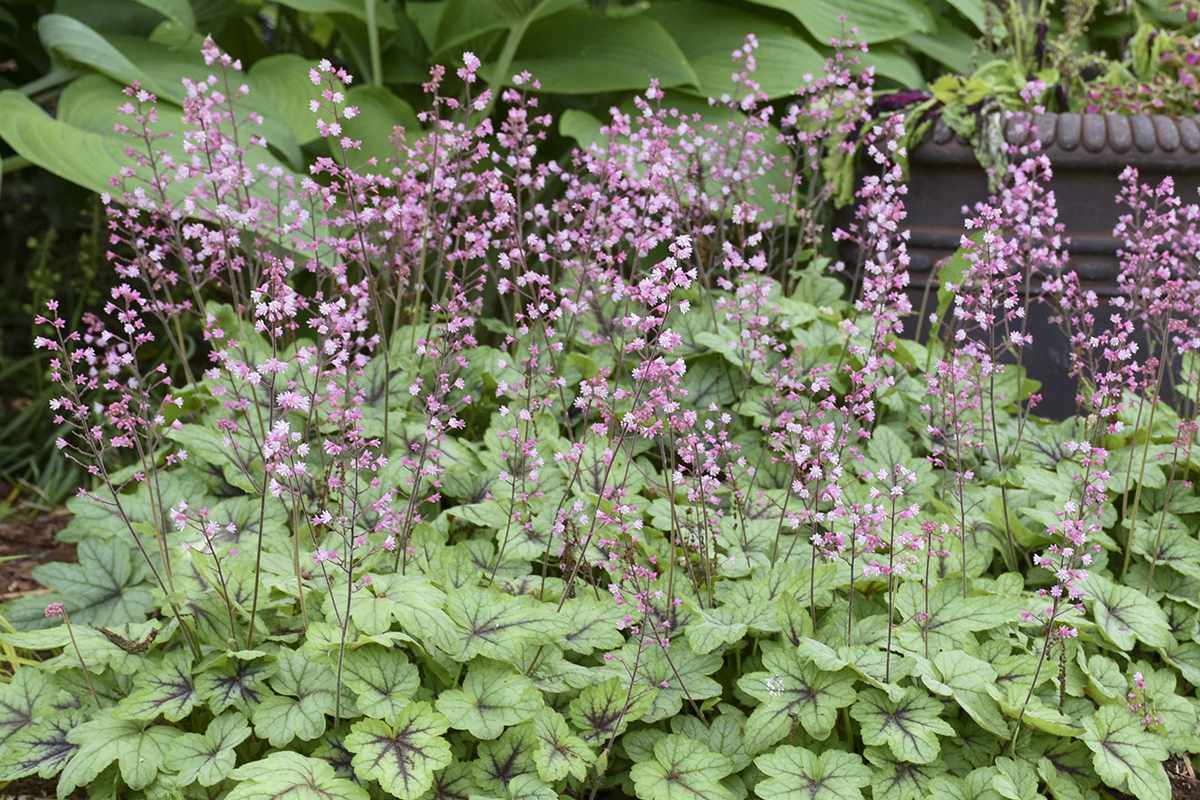
Walters Gardens; Courtesy of Southern Living Plant Collection
Growing perennials in your garden is a wonderful way to have flowers each year without having to dedicate time to creating a space, buying new plants, and then, planting them. And sometimes you may have areas in the landscape that are bare and you want to cover the soil to prevent erosion. Choosing low-growing perennials is a convenient and effective ground cover, minimizes erosion, and adds foliage and flowers to the area.
We spoke with gardening pros about their preferred low-growing perennials and why they recommend them.
Meet The Expert
Mary Phillips is Head of Native Plant Habitat Strategy & Certification programs at the National Wildlife Federation.
Chris Fifo is a Product Representative for Darwin Perennials and National Garden Bureau member.
Jim Putnam is an expert for the Southern Living® Plant Collection.
Frogfruit
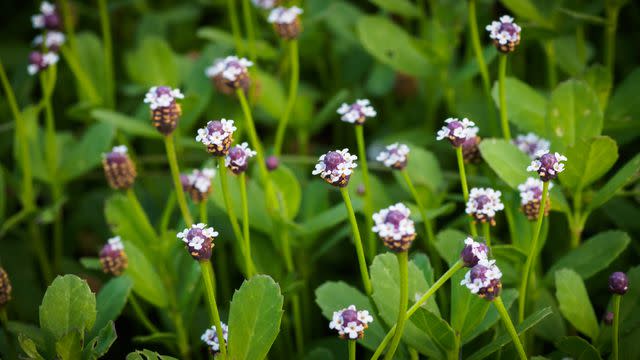
Getty Images
Frogfruit is an evergreen native plant to the United States that produces white and pinkish flowers from May to November. These flowers are an important food source for butterflies and native bees.
Many butterfly species need specific plants where they can lay their eggs for the next generation. Frogfruit is a larval host plant to several species of butterflies, says Mary Phillips, Head of Native Plant Habitat Strategy & Certification programs at the National Wildlife Federation. She says this groundcover "thrives in a range of soil conditions and can tolerate drought and occasional flooding."
Botanical Name:Phyla nodiflora
Sun Exposure: Full sun to partial shade
Soil Type: Moist to dry, well-drained, rocky, sandy, loamy soils
Soil pH: Acidic, neutral (6.0 to 6.7)
Winecups
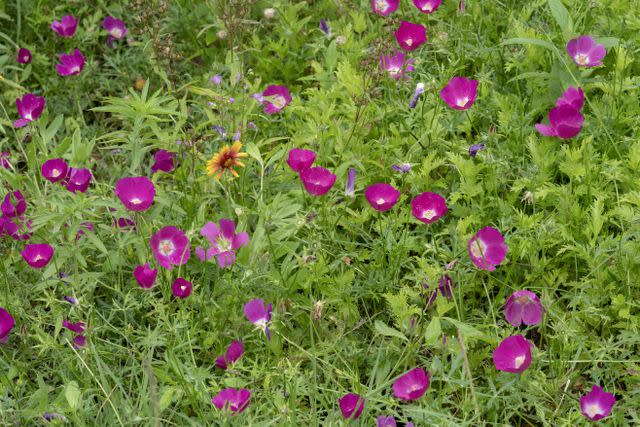
Getty Images
Growing more native plants in your landscape is a way to have more beneficial insects, such as bees and butterflies and create more biodiversity in the ecosystem. Winecups, also known as Purple Poppy Mallow, is a native low-growing groundcover that you'll find in the woods and in shrublands. "With this native, you get bright wine-colored flowers on a thick mat of sprawling gray-green foliage," says Chris Fifo, Product Representative for Darwin Perennials and National Garden Bureau member.
Botanical Name:Callirhoe involucrate
Sun Exposure: Full sun to partial shade
Soil Type: Moist to dry, well-drained, rocky, sandy, or loamy soils
Soil pH: Slightly Acidic, neutral (6.0 to 6.5)
Ice Plant
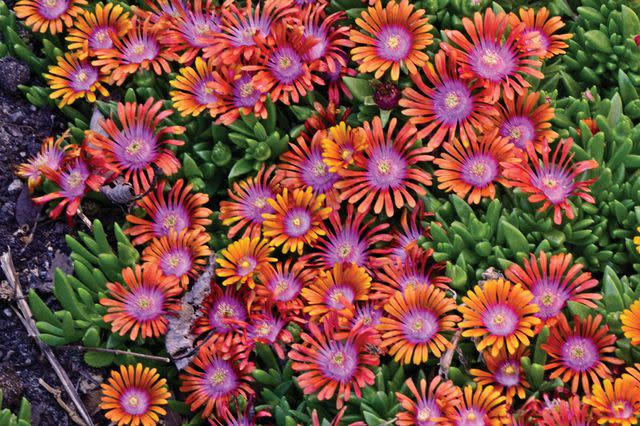
Proven Winners
An African native low-growing perennial, the ice plant stands out for its succulent-type leaves with tiny hairs. One variety Fifo recommends is Ocean Sunset™ and says, "It’s carefree, doesn’t mind drought, no deadheading or maintenance required in the garden, and great for hot/dry locations."
Ice plants don't fare well in cold temperatures so check the USDA hardiness zone before planting. Some ice plant species are invasive so check the invasive plant list for your geographical region before growing.
Botanical Name:
Sun Exposure: Full sun
Soil Type: well-drained, sandy soil
Soil pH: Acidic, Neutral (6.0 to 7.0)
Carex EverColor® ‘Everillo’
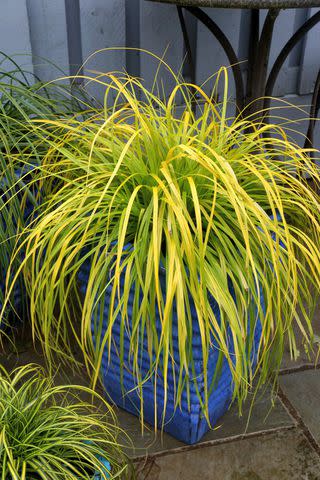
Southern Living Plant Collection
Perennial grasses or sedges can be wonderful options for a low-growing groundcover. "Carex EverColor® ‘Everillo’ can be planted en masse on a slope or as a groundcover [and] will prevent erosion," says Jim Putnam, expert for Southern Living® Plant Collection. With golden-hued, grass-shaped leaves, this plant brightens up any area in your landscape. "If you’re struggling with adding brightness to shady spaces, this variety is especially good for infusing a pop of color and textural interest even when direct sunlight is scarce," says Putnam.
Botanical Name:Carex oshimensis ‘Everillo’
Sun Exposure: Partial, shade
Soil Type: Moist, well-drained
Soil pH: Acidic, neutral, slightly alkaline (6.0- 7.5)
Brass Buttons ‘Platt’s Black'
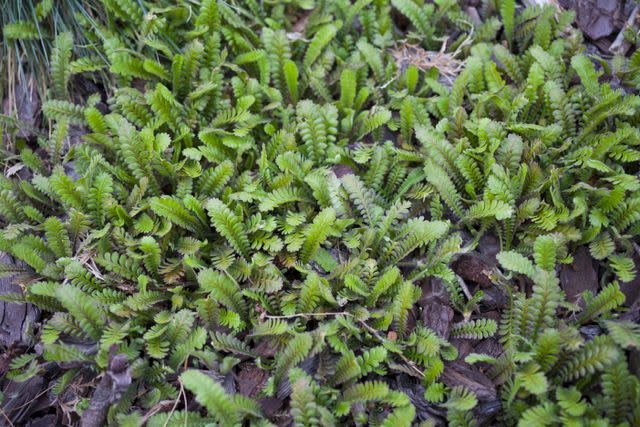
Getty Images
A native plant from New Zealand, Brass Buttons prefers partial sun and cooler temperatures but can adapt to many environments. This low-growing perennial has light green foliage with tints of black, brown, or purple that gives a cool look to any area in your garden. "I love its ferny texture," says Fifo. "It’s a tight-growing groundcover with nearly-black highlights on its foliage."
Botanical Name: Leptinella squalida
Sun Exposure: Partial sun
Soil Type: well-drained, loamy soil
Soil pH: Acidic (5.5 to 6.8)
Moneywort ‘Night Light'
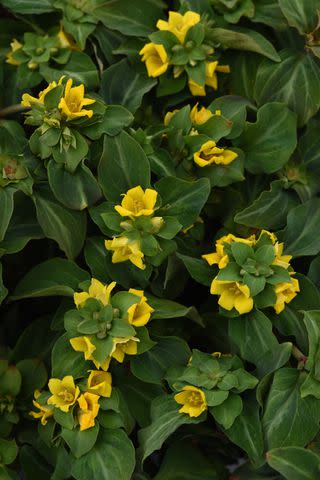
Proven Winners
If you're in search of a low-growing ground cover that thrives in the shade, grow moneywort. "There are not a lot of shade-flowering perennials on the market, so this offers some gardeners a solution," says Fifo.
He recommends the 'Night Light' variety for its dark color foliage and blooms. Yellow flowers begin to bloom in spring through the first frost in the fall providing plenty of color for months.
Botanical Name: Lysimachia alfredii
Sun Exposure: Full shade to part shade
Soil Type: Moist, well-drained
Soil pH: Acidic (5.8 to 6.2)
‘Pink Fizz’ Heucherella
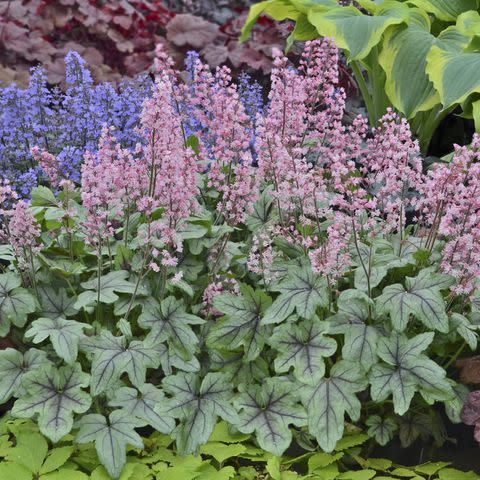
Southern Living Plant Collection
A variety of Heucherella, Pink Fizz has big green leaves with purple veins that produce vibrant pink flower spikes starting in the summer through the fall. According to Putnam, "Low mounding habit and bold, attractive veining make this an attention-grabbing choice in partial to full shade containers and landscapes." When the flowers are in bloom, you're likely to have visits from butterflies and hummingbirds.
Botanical Name: Heucherella 'Pink Fizz'
Sun Exposure: Partial shade to full shade
Soil Type: Moist, well-drained
Soil pH: Neutral (6.0 to 8.0)
Wild Strawberry
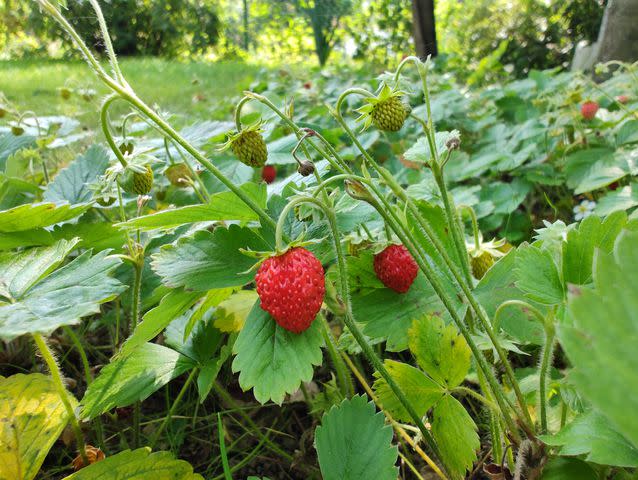
Getty Images
Love strawberries and want a low-growing perennial? Grow Wild Strawberries. This native plant manages with minimal care and produces white flowers from late spring through early summer. Phillips says wild strawberry attracts butterflies, moths, bees, birds and has a special value to short-tongued native bees. If you have a hilly terrain, this plant, Phillips says, "provides erosion control for slopes or embankments."
Botanical Name:Fragaria virginiana
Sun Exposure: Full sun to partial shade
Soil Type: Moist, well-drained
Soil pH: Acidic, neutral (5.5 to 6.5)
Sea Pinks Dreameria®
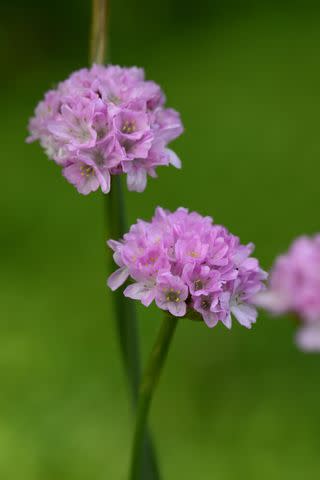
Proven Winners
If you're looking for a low-maintenance and easy-to-care for that produces fun blooms in the spring, you'll want to grow Sea Pinks Dreameria®. Fifo says this variety is more heat tolerant and offers frost-to-frost flowering with flowers that look like garden cake pops. If you live in an area where deer frequently like to snack on your flowers, this low-growing perennial is deer-resistant.
Botanical Name:Armeria pseudarmeria
Sun Exposure: Full sun to partial shade
Soil Type: Moist, well-drained, clay, loamy or sandy
Soil pH: Acidic, alkaline, neutral (5.8 to 6.2)
Purple Pixie® Dwarf Weeping Loropetalum
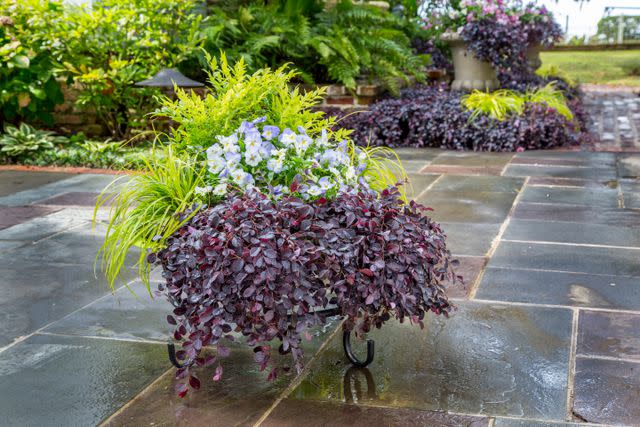
Southern Living Plant Collection
Purple Pixie® Dwarf Weeping Loropetalum can grow in most types of soil. "This variety has an exceptional low-growing, mounding and weeping growing habit," says Putnam. He recommends planting this variety of Loropetalum as a ground cover. "Fertilize in late winter or early spring," he adds and as a bonus, you don't need to prune it.
Botanical Name:Loropetalum chinense ‘Peack’
Sun Exposure: Full to partial sun
Soil Type: Well-drained
Soil pH: Akaline to Slightly acidic (4.0 to 6.5)
Related: 15 Fragrant Perennials That'll Fill Your Garden With Amazing Scents For Years To Come
For more Southern Living news, make sure to sign up for our newsletter!
Read the original article on Southern Living.
